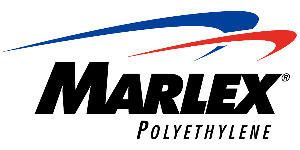Home » HDPE Pipe Grade
What Is HDPE Pipe Grade
HDPE pipe grade is a highly crystalline, non-popular thermoplastic resin. HDPE pipes must withstand a certain pressure, and HDPE pipe grade with large molecular weight and good mechanical properties is the best choice. LDPE resin usually has low tensile strength, poor pressure resistance, poor rigidity, poor dimensional stability during molding, and difficult connection, so it is not suitable as a material for water supply pressure pipes. However, due to its high hygiene index, LLDPE has become a common material for the production of drinking water pipes.
Brands We Supply
Would Like The Quotation
Leave more about your requirements, such as, brands, models, quantity, package, country, etc.
Models of HDPE Pipe Grade for Sale in Chemate
Why Are Pipes Made of HDPE So Popular
- HDPE pipes should not only have good economy, but also have a series of advantages such as stable and reliable interface, material impact resistance, crack resistance, aging resistance and corrosion resistance.
- The connection is reliable. The polyethylene pipe system is connected by electric heat fusion, and the strength of the joint is higher than that of the pipe body.
- Good impact resistance at low temperature. The low-temperature embrittlement temperature of polyethylene is extremely low, and it can be used safely in the temperature range of -60°C-60°C. During construction in winter, due to the good impact resistance of the material, there will be no brittle cracking of the pipe.
- Good resistance to stress cracking. HDPE has low notch sensitivity, high shear strength and excellent scratch resistance. And its resistance to environmental stress cracking is also outstanding.
- Good chemical resistance. HDPE pipes can resist the corrosion of various chemical media, and the chemical substances in the soil will not cause any degradation to the pipes. Polyethylene is an electrical insulator and therefore will not rot, rust or galvanically corrode. In addition, it does not promote algal, bacterial or fungal growth.
- Anti-aging, long service life. HDPE pipes containing 2-2.5% evenly distributed carbon black can be stored outdoors or used for 50 years without being damaged by ultraviolet radiation.
- Good abrasion resistance. The comparison test of wear resistance between HDPE pipe and steel pipe shows that the wear resistance of HDPE pipe is 4 times that of steel pipe. In the field of mud transportation, compared with steel pipes, HDPE pipes have better wear resistance, which means that HDPE pipes have longer service life and better economy.
- Good flexibility. The flexibility of the HDPE pipe makes it easy to bend, and engineering can bypass obstacles by changing the direction of the pipe. In many cases, the flexibility of the pipe can reduce the amount of pipe fittings and reduce the cost of installation.
- The water flow resistance is small. HDPE pipe has a smooth inner surface with a Manning coefficient of 0.009. The smooth surface and non-adhesive properties ensure that the HDPE pipe has a higher conveying capacity than traditional pipes, and also reduces the pressure loss of the pipeline and the energy consumption of water transportation.
- Easy to transportation. HDPE pipes are lighter than concrete pipes, galvanized pipes and steel pipes. It is easy to transport and install. The lower manpower and equipment requirements mean that the installation cost of the project is greatly reduced.
- A variety of construction methods. In addition to the traditional excavation method, there are a variety of new non-excavation technologies to be uses for construction, such as pipe jacking, directional drilling, lining pipe, split pipe, etc.
What Are Application Fields of HDPE Pipe
Water supply systems for municipal engineering, indoor water supply systems for buildings, outdoor buried water supply systems and buried water supply systems for residential quarters and factories, old pipeline repairs, water treatment engineering pipeline systems, industrial water pipes for gardens, irrigation and other fields, etc. HDPE pipes can’t be used for hot water lines.
HDPE Pipes Processing Flow
Raw material preparation. Choose the right type of HDPE resin. Screening, cleaning, drying and other treatments are carried out to ensure the quality and stability of raw materials.
Extrusion. Put the treated high-density polyethylene granulars into the extruder, and after heating, melting, extrusion and other processes, the molten polyethylene is extruded to form the preliminary shape of the pipe.
Cool to set. The extruded pipe needs to be cooled and shaped to ensure the dimensional accuracy and physical properties of the pipe. Cooling and setting are usually carried out by water bath cooling or air cooling.
Cut to shape. The cooled and shaped pipes need to be cut and shaped according to different specifications and lengths for subsequent processing and use.
Comparison of PE Pipes and PVC Pipes
Polyethylene pipes are uniquely flexible, with elongation at break typically exceeding 500%, and bend radii as small as 20-29 times the pipe diameter. Therefore, it is easy to move and bend when laying. HDPE pipes are highly adaptable to piping foundations. On the one hand, lower requirements for the pipe base during laying can save costs. And on the other hand, the pipe base is not easily damaged when uneven settlement and dislocation occur after laying.
The low temperature resistance of polyethylene pipes is much better than that of polyvinyl chloride pipes. The operating temperature range of rigid PVC pipes is between 0°C and 45°C, and the temperature range is relatively narrow.
When laying polyethylene pipes, the requirements for the straightness of the pipe trenches are not very high, so that the excavation of the pipe trenches can be significantly reduced and the speed of the laying project can be accelerated. Many installation methods of polyethylene pipes are impossible for PVC pipes.
- Email: sales@chemategroup.com
- Tel: 0086-371-60921621
- Whatsapp: +86 18624832876
- Wechat: +86 18624832876
- ADD: NO.80 PUHUI ROAD,ZHENGZHOU CITY, HENAN PROVINCE, CHINA








